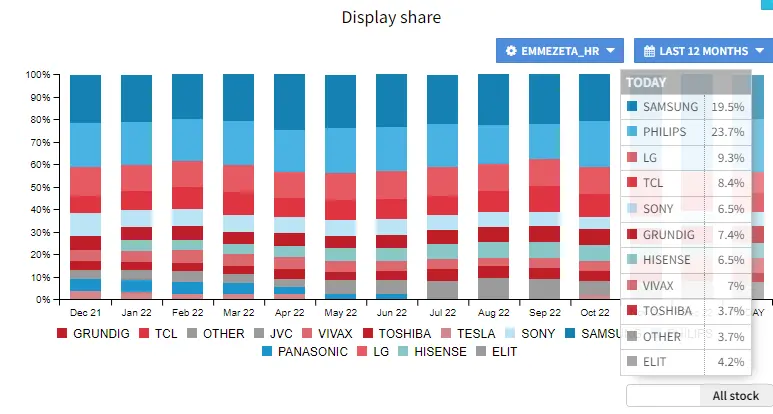Importance of Market Data during the Business Planning Process
The end of the year is approaching and while most of the supply chain companies (vendors, distributors, retailers, ecommerce merchants) are already aware of results that will be achieved for 2022, there is no time for relaxing. New 2023 is behind the corner and new plans and targets are ready, or to be finalized these days.
In order to enter the new year more prepared, we suggest making a plan that will follow a few steps.
1. Market research and analysis
Before opening an Excel file and creating a 2023 plan, we suggest to research the market thoroughly, and to create your own process that will be repeatable in 3 months, or 6 months, so you can compare the data and track market changes. For example, how many customers are interested in a certain product category, are there any new brands on the market or some new rising stars among old players, who is your biggest competitor, has something changed on the market, etc.
Why do we suggest this? It will guide you in defining the goals.
2. Set your business goals
The second and main step of the plan is to define exactly the goals, where would you like to be in the next business year, what are you planning to achieve. The goals must be concrete and precise. Usually managers use SMART goals: Specific, Measurable, Achievable, Relevant, and Time-Bound.
For example, if you plan to increase your revenue for +30% YoY, and the category is stable in terms of total business for years, no growth or decline, that means you need to achieve 30% increase in your market share. If you had 15% market share in 2022, one goal can be to achieve additional 4,5% market share, by acquiring 1% from brand A, 2% from brand B and 1,5% from brand C. You will want to do this until the end of first half of the year, so you can correspondingly increase also cumulative revenue.
It is know that correlation between offer on the market and sell-out is very high, percentage-wise it can differ for +/-2% points, so we invite you to use our Display share chart in KLIKER market’s dashboard.
By using this approach, you will achieve goals more easily because you’ll know exactly what needs to be done, which are the milestones and potential obstacles.
3. Reality check
Once you've determined your goals and the ideal position for you in the coming year, look at where you are now compared to those goals. For example, the goal is to increase your brand’s shelf visibility in store X by 10% in the next year. In order to check if the goal is realistic, look at the data from last year: is there an increase in SKU count of that product on the market overall, how much did the SKU count of that same product in store X increase in the last year, is there a brand with declining SKU count where you can place your products as a substitute?
This is just one of many ways KLIKER data can assist you during your planning session.


Let's take for example that we work as brand managers for Philips and we want to increase our share of TVs in Emmezeta by 5% in the next year. With the help of the charts above, we can see that in December last year Philips TV share was 19.4%, and in the period up to December this year it increased to 23.7%, which is an increase of 4.3% p.p.
Now when we know how much our share of TVs in Emmezeta grew in the previous year, we can look more realistically at achieving the goal of growing by 5% in the following year. Also, the same analysis can be done in different time frames, by quarter or by month, so we can have a more detailed insight into how much the share grew in which quarter, whether that display share decreased in a quarter, was kept stable or increased.
4. Evaluate Your Plan's Performance
Strategic planning is a process that is ongoing and after you start implementing your plan, you should monitor the progress, observe external changes that were not planned, decide if something needs to be changed in the strategy, etc.
Do not be alarmed by possible changes on the market in a negative way. Schedule regular check time, and observe which part of the plan is on track and on the other side, which part needs to be changed and what could be improved. An important factor is that after the change, the goals are still clear and achievable both to you and your staff. Some parts of the plan should be reviewed on a daily or weekly basis, while the rest are sufficient for monthly or quarterly reviews.
Market Data in the Business Planning Process
KLIKER market offers accurate and sorted data in real time. At any time you can see a real picture of the market, overview of data by months, quarters, years. It also allows price comparison, competition monitoring, promotions and stock level tracking and other important parameters.
So with a few clicks you get an insight into everything you need to know about your market, not only to set and follow your business plan, but much more than that.
Use your KLIKER market login credentials:
If you do not have a KLIKER market account yet, contact us and we will create a demo account for you promptly.
